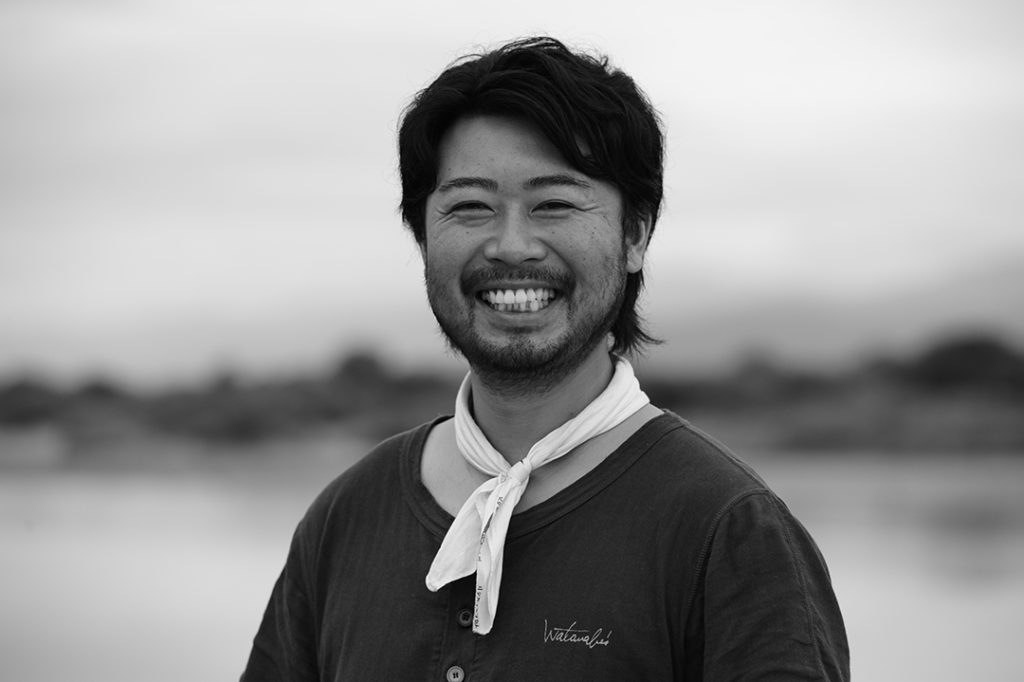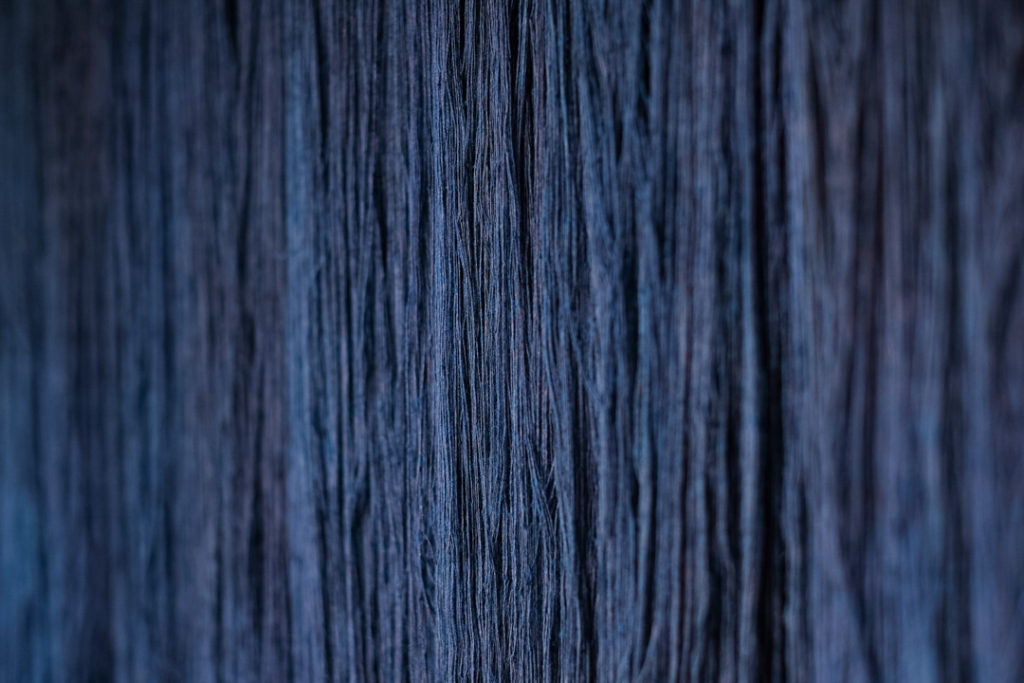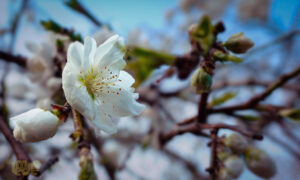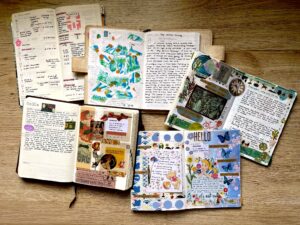Kenta Watanabe and the Different Shades of Aizome
Words by Mariah Reodica
In a world of fast fashion and mass production, the care that goes into artisanal indigo dyeing stands out. This tradition of indigo dyeing is what Kenta Watanabe advocates for as one of the remaining aishi, or Japanese indigo dyeing masters. With Watanabe’s, his sustainable enterprise, he oversees every step of the indigo process from cultivating the plants to the final touches on a garment, and even how to channel the byproducts of this process into sustainable community farming.
On October 1 2021, he shared his practice and philosophy with Filipino and Japanese viewers over Zoom. It was the second installation of The Japan Foundation, Manila’s Itoteki Life series, which explores the intentionality behind Japanese artisanship. He delivered the talk from his studio in Japan, seemingly straight out of work with his hands tinted with dye as he gestured enthusiastically about his practice.
While in the modern world, our close encounters with indigo dye are often in the form of jeans, Watanabe integrates traditional indigo dyes into contemporary fashion. Watanabe’s in particular has drawn attention to its modern uses of traditional dyes, with boutique tees, sneakers, and even face masks. It’s a fresh take on a centuries-old craft. Sadly, the remaining practitioners have dwindled from a burgeoning industry to only five families left at present.
“In Japan, indigo dyeing or aizome is still considered a Japanese traditional art. The awareness of it has stopped here,” said Watanabe. “I continue my responsibility and job, focusing my time on how to make aizome become a part of everyday Japanese life.”
.jpg)
He once worked in a trade company, but after discovering the wonders of natural dyes, he left his job and apprenticed under master dyer Osamu Sensei. Watanabe decided to relocate to Tokushima Prefecture, southwest of Kyoto, whose fertile soil and climate made it historically renowned for its indigo dyeing for centuries.
This rich heritage of the indigo dye is imprinted on Watanabe, who traced the historical lineage of indigo dyeing and its own traditions across the world. There are 6000-year old indigo artifacts in Peru, and traces of 5000-year old dyeing tanks in India. Even the Egyptian Suntankhumen mummy was buried in Indigo-dyed cloth. This shade has captivated people across the globe, and Watanabe carries Japan’s spin on it.
“What makes indigo dyeing very interesting,” Watanabe says, is that even though all the indigo dyeing in the world uses the same chemical reactions of oxidation and reduction, there are methods that are completely different from each other based on the raw plant being used as material.” Each country’s dyeing methods are constantly evolving along with developments in agriculture and technology as well.
.jpg)
-1.jpg)

-1024x683.jpg)
What sets natural plant-based dyes apart from synthetic dyes is that plant-dyes come from indigo plants, while synthetic dyes are made by reducing petroleum or coal into pigments. Centuries ago, it wasn’t possible to obtain pigments from fossil fuels, so the craftsmen of eras past used what was immediately available: plants.
There are actually more than 100 kinds of plants in the world that can be called indigo, or ai. The main plant is the kade ai family of plants, which is what Watanabe’s uses. Meanwhile in India, their most famous dye is derived from legumes. Europe’s indigo dyes come from another family of plants. What plants are commonly used and dye fermentation methods are determined by a region’s climate and the plants that thrive in it–and of course, the season in which they can be harvested.
“It’s not easy,” Watanabe says. “”The multitude of factors that are considered in indigo dyeing has resulted in this mysterious and unique culture that differs from other countries.” In Japan which has four seasons, Watanabe constantly seeks ways to innovate indigo dyeing. When before, indigo plants could only be harvested once a year in the summer, he can now grow them all-year round, indoors. He showed pictures of a tractor tilling the farm in an afternoon glow, indigo plants freshly-plucked and gleaming with morning dew, and the vibrant powdered pigment.
After harvesting the indigo plants, he dries the leaves, and ferments them with water and air for 100 to 120 days to compost them. The bacteria, in particular, plays a crucial role in regulating the temperature of the soil indoors, to make it just right for the indigo liquid for the fermentation.
Watanabe likens the fermentation bacteria to humans: “When we’re tired, they’re tired. When they have the will to get it done, they are the type who will become extremely powerful.” The sight of fermenting indigo plants is certainly impressive, with steam rising out of large piles of organic matter–The center, in fact, is at 70 degrees Celsius. He also showed a photo of textiles dyed in different shades of indigo, from a deep, bold shade to a pale tint, demonstrating the complex range of tones that a single plant can create. Like a scientist, he methodically mixes the pigment and different kinds of dye to produce concentrations that can create the shade he envisions.
.jpg)
.jpg)
In Watanabe’s indigo dyeing process, nothing is wasted, either. He cooperates with neighboring farmers, selling the surplus of agriculture to farmers as a cheaper and organic compost option compared to chemical fertilizers. This spirit of constantly honing the process to perfection is evident in every step of the process.
“I will always try to seek out and continue to devote myself without the fear of challenges or failure. I would like to continue to find ways to sustain what we have now,” he shares with determination. Watanabe’s would not have come this far without his sheer commitment to his craft, which sustains not just the business, but the community around him. It hints at ways that we can reimagine our relationship with the plants around us and how these can provide us beauty and sustenance. The aizome, as it turns out, isn’t just about dye itself. It’s a story of the environment and dedicated artisans who make it come to life, all with intention.


All images provided by Watanabe’s. Visit their official website www.watanabezu.com
Inspired by Japanese artisans and the pursuit of quiet mastery, an Itoteki Life means being thoughtful about the everyday things and how it can collectively elevate how we live. The Japan Foundation, Manila hosts its 2021 Itoteki Life workshop-lecture from August to October exploring craftsmanship in moss gardening, indigo dyeing, and coffee. This program is supported by JTI.




.jpg)



